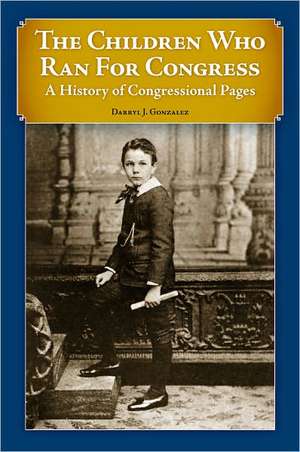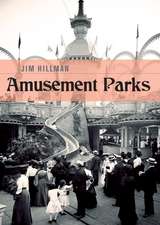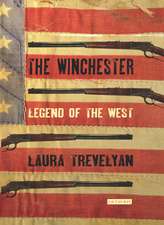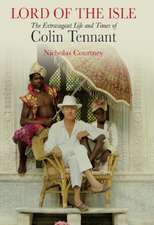The Children Who Ran for Congress: A History of Congressional Pages
Autor Darryl J. Gonzalezen Limba Engleză Hardback – 20 oct 2010 – vârsta până la 17 ani
Preț: 311.27 lei
Preț vechi: 376.75 lei
-17% Nou
Puncte Express: 467
Preț estimativ în valută:
59.57€ • 62.11$ • 49.51£
59.57€ • 62.11$ • 49.51£
Carte tipărită la comandă
Livrare economică 20 martie-03 aprilie
Preluare comenzi: 021 569.72.76
Specificații
ISBN-13: 9780313386664
ISBN-10: 0313386668
Pagini: 328
Ilustrații: 24 bw illus
Dimensiuni: 156 x 235 x 33 mm
Greutate: 0.66 kg
Editura: Bloomsbury Publishing
Colecția Praeger
Locul publicării:New York, United States
ISBN-10: 0313386668
Pagini: 328
Ilustrații: 24 bw illus
Dimensiuni: 156 x 235 x 33 mm
Greutate: 0.66 kg
Editura: Bloomsbury Publishing
Colecția Praeger
Locul publicării:New York, United States
Caracteristici
Presents a chronology tracing the evolution of the page system from the First Continental Congress in 1774 to present day
Notă biografică
Darryl J. Gonzalez, PhD, is a federal employee in Washington, DC, and has worked in education for 20 years.
Cuprins
AcknowledgmentsChapter One OverviewIntroductionPart One: The Written RecordsPart Two: Data GatheringInterviewsChapter Two The Ancestors of Today's Pages, 1774 to 1926IntroductionPart One: America's Founding Fathers, and Her Founding BoysCongressional Messengers before 1800The First Senate PagesThe First House Pages and the First Supreme Court PagePart Two: Who Pages WereUsing Young Boys as PagesBecoming a PageAppointing Orphans as PagesSpecial PagesPart Three: The Unique Community of PagesPages and Their Relationships with MembersPage MischiefPart Four: The Attention Paid to Formal SchoolingChapter Three Congress Passively Delegates Control of Capitol Page School to Private Individuals, 1926 to 1942IntroductionPart One: Child Advocacy Laws Put Pressure on CongressChild Labor in the District of ColumbiaCompulsory Education in the District of ColumbiaPart Two: The Page System Adds a School, 1926 to 1931Parents Hire a Private Tutor, 1926Laupheimer and Butler Collaborate to Form a Page School, 1927 to 1929Devitt Assumes Control of Capitol Page School, 1929 to 1931Part Three: Another Chance Meeting Leads to Another Page School, 1931 to 1942Kendall and McClintic Collaborate to Form a Page School, 1931Kendall's Capitol Page School Grows, 1932 to 1942Part Four: Kendall and the Roosevelt White HousePart Five: Pages in the News, 1939 to 1940Chapter Four Senator Burton Advocates for Pages, 1942 to 1949IntroductionPart One: Burton Visits Page School and Effects ChangePart Two: Burton's Involvement Continues, 1942 to 1943Part Three: The Little Congress and Alice TuohyPart Four: The House Committee on Public Buildings and Grounds, October 1943Part Five: Fallout from Tuohy's Letter, December 1943 to the Summer of 1944Part Six: Setbacks for Kendall, 1944-1945 School YearIntroductionPresident Roosevelt Dies; Truman Abandons Diplomatic School, April 1945Anderson Attacks Kendall and Page School, May 1945Congressional Hearings to Investigate Page School, June 1945Part Seven: Pages Secure a Residence, and the 1945-1946 School YearPart Eight: Page School Goes from Private Control to Public, and the 1946-1947 School YearPart Nine: Capitol Page School Operates under Public Control, 1947-1949The 1947-1948 School YearThe 1948-1949 School YearChapter Five Attempts at Change and Institutional Inertia, 1949 to 1982IntroductionPart One: Page School Outgrows Its Space in the CapitolPage School Moves Up in the World, from Basement to Attic, 1949Plans to Move Page School to the New Senate Office Building, 1949 to 1958Part Two: A Page Residence and More Inertia, 1951 to 1963Review of Legislation, 1951 to 1956Early Attempts at Change, 1956The Change Effort Gains Momentum, 1956-1957 School YearEfforts to Secure Housing Continue, 1959 to 1963A Congressional Hearing and the Washington Post Series, 1963Part Three: Edith Green Gives the Change Movement New Focus, 1964 to 1965Green's Committee Chinks Away at Institutional Inertia, 1964Green Fights for Change Again, 1964 to 1965The Aftereffects of Green's Advocacy, 1965Part Four: Continued Attempts at Change, 1966 to 1982The Period of Policy Churn Continues, 1966 to 1970The Period of Inertia Continues, 1970 to 1975Focus Turns to Page School, 1976 to 1978Part Five: Key Players Look Back and Comment on the Page SystemPart Six: Pages in the News, 1957Part Seven: Accreditation at a Boarding School with No Boarding Facilities, 1949 to 1974Chapter Six Marginalized Groups within the Page SystemIntroductionPart One: African American Pages, 1954 to 1965Part Two: Congress Wrestles with Allowing Female Pages, 1917 to 1971The "First" Female Page, 1939Girls Test the Page System, 1939 to 1954Senators Javits and Percy Force the Issue, 1970 to 1971Part Three: Supreme Court PagesChapter Seven Capitol Page School Is Closed, 1982 to 1983IntroductionPart One: Pages Embarrass Congress with Accusations, June 1982Part Two: The Task Force Recommends ChangesPart Three: Senate Page School Remains a Public-Private School under DCBOE and House Page School Becomes an Independent SchoolPart Four: Robert Knautz Founds the New House Page SchoolPart Five: House Page School Opens, September 1983PostscriptChapter Eight DiscussionPart One: Changes and Inertia at Page SchoolPart Two: Changes and Inertia Concerning a ResidencePart Three: Changes and Inertia in Admitting MinoritiesPart Four: Conclusion and Remaining QuestionsAppendix 1: TimelineAppendix 2: List of InterviewsNotesIndex
Recenzii
There is so much more to find out between the covers of this book. You won't be disappointed!
Darryl J. Gonzales has done a great service by rescuing the history of a little-known corps of federal workers who have kept the U.S. government humming since its inception. The Children Who Ran for Congress: A History of Congressional Pages provides an exhaustive history of the boys (and girls) who have served Congress for more than 200 years.
Darryl J. Gonzales has done a great service by rescuing the history of a little-known corps of federal workers who have kept the U.S. government humming since its inception. The Children Who Ran for Congress: A History of Congressional Pages provides an exhaustive history of the boys (and girls) who have served Congress for more than 200 years.













